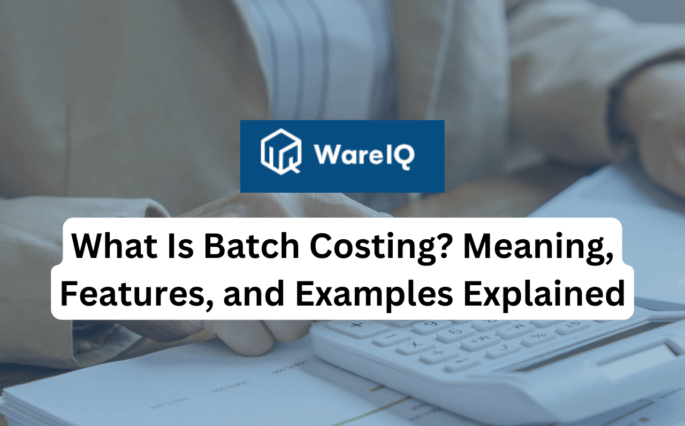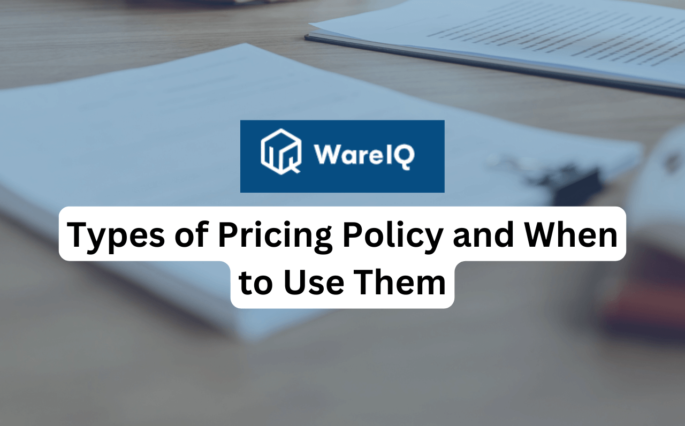Key Aspects to consider while launching a fashion apparel product

“Sustainability is no longer a fringe issue within fashion but the most defining challenge – and opportunity – of our time.” Another Magazine, 2019

Running a fashion business takes careful preparation and a well-thought-out strategy. It goes beyond simply collecting inventory, and exhibiting and promoting it in order to sell items at a profit. A clothing line business is distinguished by high margins and a straightforward business plan. Clothing line businesses, particularly those involving resale, have lower risks than other industries.
In 2018, Consumer Goods Forum and Futerra surveyed over 3,600 adults across Europe and discovered that 78% of people trust transparent brands more and that 90% of corporates have noticed an increase in public interest in transparency since 2017, with this interest expected to rise over the next five years.
- 1. Vision for Success
- 2. Sustainable Fashion Trends
- 3. Empowering Self-Taught Designers
- 4. Unconventional Paths to Fashion Success
- 5. Market Research for Fashion Success
- 6. Innovative Fashion: Creativity, Cost, and Fit
- 7. Choosing the Right Manufacturer: A Deliberate Process
- 8. Business Excellence Essentials
- 9. Crucial Marketing Mix
- 10. Profitable Pricing Strategy
- 11. Error-free fulfilment
- 12. Stringent Return Processing
- 13. Returns claims management on marketplaces
- 14. Inventory Management
- Conclusion
- FAQs
- How important is having a clear vision for launching a successful fashion design firm?
- What are some key sustainable fashion trends and why are they gaining importance in the industry?
- Can self-taught designers succeed in the fashion industry in the digital age?
- What unconventional paths can one take to achieve success in the clothing line business?
- What role does market research play in the success of a fashion business, and what should it entail?
- How can creativity, cost-effectiveness, and proper fit be balanced when designing fashion products?
- What factors should be considered when choosing the right manufacturer for a clothing line?
- How important is labour management in the apparel industry, and why is it necessary for entrepreneurs?
- What elements constitute a crucial marketing mix for a fashion business in a competitive market?
- What pricing strategy should entrepreneurs adopt to ensure profitability in the clothing line business?
1. Vision for Success
Successful businesses emerge from a vision to address significant client issues. As a result, finding the essential gaps that have yet to be covered by any new-age clothing brand is one of the most important elements to consider when launching a fashion design firm.
2. Sustainable Fashion Trends
According to recent McKinsey & Company (2019) research, internet searches for “sustainable fashion” increased between 2016 and 2019. “Transparency has become an important issue further upstream in the supply chain, with consumers increasingly concerned about issues such as fair labour, sustainable sourcing, and the environment,” Business of Fashion said in 2019. Consumers want to support firms that do good in the world, with 66% prepared to pay more for environmentally friendly products. Before purchasing a product, 42% of millennials want to know what is in it and how it is created, compared to 37% of Gen Z”.
3. Empowering Self-Taught Designers
Despite being self-taught, designers like Vivienne Westwood and Dapper Dan achieved enormous success in the fashion industry. And they began their professions before the Internet. We live in an age of access when anybody can learn to fix an engine or tailor a t-shirt by viewing a YouTube video.
4. Unconventional Paths to Fashion Success
Many of the same factors apply to launching a clothing line as they do to starting any other business. What does it cost to get started? When should you seek funding for your startup? What kind of outside assistance will you require to manage the legal, financial, production, and distribution elements of the business? Where and how will you make your clothes?
5. Market Research for Fashion Success
Once you’ve decided on a company niche, perform extensive research on the market size, possible competitors, important vendors, and your target demographic. A thorough grasp of the target demographic is essential for a successful fashion business.
6. Innovative Fashion: Creativity, Cost, and Fit
This is possibly the finest arena in which you can apply your fashion skills. It allows for creativity, analytical thinking, and innovation while also constituting your company’s distinct value offer. Consider how they can be created at a low cost. Prepare a basic technical drawing and brief your pattern-maker and supplier to ensure that your product has the correct form. Size is another important consideration, as today’s clients are particularly concerned with proper fit.
7. Choosing the Right Manufacturer: A Deliberate Process
While there is no shortage of apparel manufacturers and distribution partners, selecting the best one should be a deliberate procedure. You could wish to visit the production location, purchase some samples, or meet with the seller in person. Set a budget and attempt to stick to it.
8. Business Excellence Essentials
The knowledge and new services provided by the brand to the consumer are the primary requirements for any organisation to achieve a degree of excellence. Given that the clothing/apparel industry is heavily labour-dominated, it is critical for an entrepreneur to have competence in labour management or to hire someone who does. Employing new brains would also result in the generation of unique ideas for the product and the business.
9. Crucial Marketing Mix
Because of the market’s intense competitiveness, one cannot afford to ignore the influence of marketing. Having your company linked to a very profitable marketing plan would assist your product in getting to the correct spot. For example, if your TG spends a significant amount of time online, failing to develop the business in the internet realm would result in the brand missing out on many prospects. As a result, finding the correct marketing mix is critical.
10. Profitable Pricing Strategy
The major goal of an entrepreneur is to earn from the clothing line that has been founded. The final product should be priced with both fixed and variable costs in mind. Fixed expenses include the cost of machinery or rent, whereas variable costs are those that alter over time, such as labour costs or credit card fees. It is critical to remember that the product should be priced so that the profit margins are 30-50% higher than the expenditures associated with it.
11. Error-free fulfilment
The order processing system may be automated at each level, which will not only assist in reducing errors but will also soon pay off in terms of improved accuracy and therefore efficiency. You may better understand your unique difficulties and the most effective solutions by speaking with a reputable authority in the field of automation. An automated system will ultimately benefit from improved customer happiness and experience.
12. Stringent Return Processing
Establishing clear and uniform return rules and processes for your customers and staff is the first step in integrating return processing with your inventory management system. You should specify the terms, deadlines, and procedures for receiving and processing returns, as well as the costs, reimbursements, and exchange policies. Additionally, make sure your website, purchase confirmation emails, and packing slips make these standards and processes obvious and teach your personnel to abide by them.
13. Returns claims management on marketplaces
If a customer is dissatisfied with their purchase, they can request a return (refund or exchange) on the marketplace. The marketplace arranges for the merchandise to be picked up after it has received the return request.
14. Inventory Management
One of a company’s most significant assets is its inventory. An organization’s raw materials and finished goods are the heart of its operations in industries with high inventories including retail, manufacturing, food services, and others. When and where inventory is needed, a shortfall can be very harmful. Inventory can also be considered a liability, even though not strictly speaking in an accounting sense. The danger of spoilage, theft, damage, or changes in demand is higher when there is a big inventory. Inventory must be insured, and if it is not sold in a timely manner, it may need to be destroyed or sold at a discount.
Conclusion
Young fashion designers nowadays are progressively incorporating sustainability into their practices and designs. Future fashion designers may be expected to research, extend, and innovate on environmental challenges.
FAQs
How important is having a clear vision for launching a successful fashion design firm?
Having a clear vision is crucial because it helps you address significant customer needs and identify gaps in the market, setting the foundation for a successful fashion business.
What are some key sustainable fashion trends and why are they gaining importance in the industry?
Sustainable fashion trends include transparency, fair labour, sustainable sourcing, and environmental concerns. They are significant because consumers increasingly want to support brands that prioritize ethical and environmentally friendly practices.
Can self-taught designers succeed in the fashion industry in the digital age?
Yes, self-taught designers like Vivienne Westwood and Dapper Dan have achieved success. The digital age provides access to learning resources, making it possible for anyone to acquire skills and knowledge.
What unconventional paths can one take to achieve success in the clothing line business?
Unconventional paths may involve starting with low-risk resale businesses, carefully managing costs, and seeking funding when necessary. Creative solutions are key.
What role does market research play in the success of a fashion business, and what should it entail?
Market research is vital for understanding your target demographic, competition, and market size. It helps you make informed decisions and tailor your products to customer needs.
How can creativity, cost-effectiveness, and proper fit be balanced when designing fashion products?
Balancing these factors involves innovative thinking, cost-efficient production processes, and ensuring that products are designed with the correct fit and sizing for customer satisfaction.
What factors should be considered when choosing the right manufacturer for a clothing line?
When selecting a manufacturer, factors to consider include location, quality, production capacity, and budget. Personal visits and budget adherence are crucial steps.
How important is labour management in the apparel industry, and why is it necessary for entrepreneurs?
Labour management is critical, especially in a labour-intensive industry like fashion. Entrepreneurs should have expertise in this area or hire competent professionals to ensure efficient operations.
What elements constitute a crucial marketing mix for a fashion business in a competitive market?
A successful marketing mix should align with your target audience and may include online and offline strategies, depending on customer behaviour and preferences.
What pricing strategy should entrepreneurs adopt to ensure profitability in the clothing line business?
The pricing strategy should consider both fixed and variable costs, aiming for profit margins that are 30-50% higher than the associated expenses to ensure long-term profitability.








